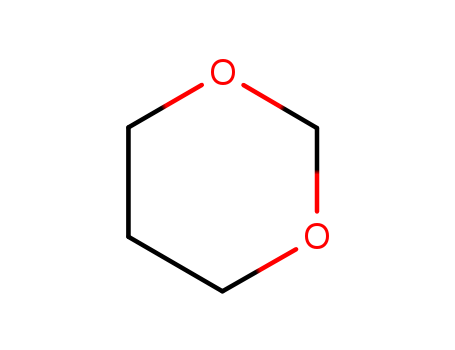10.1039/c4ra01851f
The research investigates the acetalization of glycerol to cyclic acetals using heterogeneous catalysts composed of silicotungstates anchored to MCM-41 under solvent-free conditions at room temperature. The purpose is to develop an environmentally benign and efficient method to convert glycerol, a byproduct of biodiesel production, into valuable chemicals, specifically cyclic acetals like 1,3-dioxolane and 1,3-dioxane. The study synthesizes and characterizes two catalysts: one with parent Keggin type silicotungstate (SiW12) and another with monolacunary silicotungstate (SiW11) anchored to MCM-41. Both catalysts exhibit high activity and selectivity towards dioxolane derivatives within a short reaction time. The key chemicals involved are glycerol, benzaldehyde, and the silicotungstate catalysts. The role of benzaldehyde is to react with glycerol in the acetalization process, while the silicotungstate catalysts facilitate the reaction by providing the necessary acidic sites. The study concludes that tuning the acidity of the silicotungstate leads to higher selectivity towards 1,3-dioxolane, and the catalysts can be recycled up to four times without significant loss in conversion. The catalyst 30% SiW11/MCM-41 is identified as the better choice for industrial applications due to its higher selectivity for the industrially important dioxolane derivative. The research demonstrates a green, efficient, and sustainable route for glycerol valorization.
10.1023/A:1013172730470
The study investigates the stereochemical characteristics of the reactions between a series of 2,4,5-substituted 1,3,2-dioxaborinanes (I-III) and paraformaldehyde, which are cyclic boronic acid esters and an aldehyde, respectively. The purpose of these reactions is to form 4,5-disubstituted 1,3-dioxanes (IV-VI). The reactions are catalyzed by anhydrous ZnCl2, and the products are identified by comparing them with authentic samples. The study aims to understand the influence of substituent and configuration on the reactivity of these cyclic boronic esters, particularly in processes involving the cleavage of the B-O bond. The results indicate that the reaction rates differ between stereoisomers, with trans-esters reacting faster than their cis counterparts, and that the reaction is stereospecific, not involving bond rupture at chiral centers. The chemicals used in the study include the 1,3,2-dioxaborinanes (I-III), paraformaldehyde, anhydrous ZnCl2 as a catalyst, and 1,3-dioxanes (IV-VI) as the products of the reaction.





